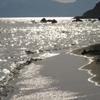Greece is a land of rich cultural heritage, considered the capital of literature, art, philosophy and politics as well as architectural wonders. Situated in the Mediterranean in Southeast Europe, with Athens as its capital it is composed of both mainland and numerous islands. The official language is Greek, although most of the younger generation speaks English, German, French and Italian.
Strewn amidst the calm turquoise waters of the Ionian and Aegean Seas are 1,400 islands, every one of which has its own history. The islands makeup one fifth of Greece’s surface area, here one may find peaceful beaches, medieval fortified towns, dramatic cliffs plunging into the sea all scattered with typical whitewashed houses with cubic forms.
In Athens one can explore the city’s rich architectural heritage with the Parthenon and Delphi’s Temple of Apollo amongst other numerous sites, while on the island of Crete the magnificent Minoan city of Knossos is a must.
Greece offers something for everyone, including those seeking sports activities both on water and land, with sailing, scuba diving, hiking and mountain bike riding. The islands offer superb conditions for all water sports, while the rugged mountainous landscapes offer a myriad of trails to explore on foot or on wheels.
Greece has a warm Mediterranean climate with hot, dry summers and mild winters. The summer winds on the islands help alleviate the very hot summer temperatures that can get very hot in the Athens area. The rainy season goes from November to March.



























